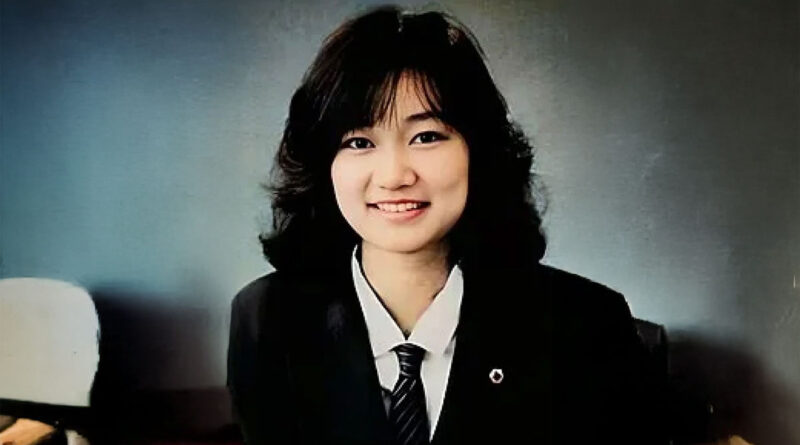Junko Furuta Abducted, Tortured and Murdered in Misato Japan
The name Junko Furuta has become a somber shorthand in Japan for the most harrowing kind of cruelty a community can confront. A diligent student with ordinary teenage dreams, she set out on a routine day and never came home. What began in Misato, Saitama Prefecture on November 25, 1988 as a targeted abduction became one of the most extensively discussed violent crimes in postwar Japan. The case is remembered not only for its brutality but also for how it exposed failures of bystander responsibility, gaps in law enforcement follow up, and the limits of juvenile sentencing at the time. This article presents a careful account of the victim’s life, the circumstances of the abduction in Misato, the sequence of events that followed in Tokyo, the investigation, the trials, and the legacy that still shapes public debate.
Who Junko Furuta Was
Junko Furuta was a 17-year-old high school student who was known among teachers and classmates as polite, studious, and responsible. Friends recalled a teenager who preferred predictable routines, part time study, and time with family. She did not smoke or drink, and she avoided the circles of delinquent youth that had become a concern in the late nineteen eighties. In other words, she was an ordinary young woman moving toward graduation with the hope of future employment and independence. The fact that she fit so clearly into the role of a model student amplified the public grief that followed. She represented hundreds of thousands of students who commute through suburban neighborhoods every day, trusting that the walk home will be uneventful.
The Setting in Misato on November 25, 1988
Misato sits northeast of central Tokyo, connected by rail and commuter roads that carry students and workers across prefectural lines. On November 25, 1988, in the early evening, the streets were busy with residents returning from school and work. Lighting along residential corridors could be sparse at the time, and teenagers often shared stretches of sidewalk with adults hurrying to make trains. It was in this familiar suburban environment that the first acts of the crime unfolded. The defendants, teenagers themselves, used a mixture of pretext and intimidation to isolate Junko. The abduction in Misato is the pivot point of the entire case, because it marked the moment when a safe everyday space failed to protect a young person.
The Abduction and Immediate Aftermath
The offenders intercepted Junko as she traveled through Misato and forced a change to her route that removed her from the ordinary lines of sight she relied on for safety. Accounts of the encounter emphasize an initial deception and then the use of threat to ensure compliance. Within a short time window after the approach, she was transported out of Misato. The abduction on November 25, 1988 is frequently mischaracterized as the moment of the murder itself, but careful chronology shows a different reality. That date marks the start of the offense sequence. It is the moment when the perpetrators seized control and cut Junko off from the protective routines of school, family, and neighborhood.
Transfer to Tokyo and Secret Confinement
Following the abduction in Misato, the teenagers moved Junko to a residence in the Ayase area of Adachi, Tokyo. The home belonged to the family of one of the offenders. From the outside it looked like any other household in a dense residential ward. Inside, it became a site of prolonged abuse and secrecy. The cruelty that followed defies easy description. It involved repeated assaults and a deliberate strategy to hide her presence behind the ordinary sounds and schedules of a family dwelling. The choice to hold her in a domestic space rather than a remote warehouse or an abandoned building is one of the reasons the public response remained so intense. The house as a symbol of safety had been inverted.
Missed Opportunities and Bystanders
The case is also remembered for the missed opportunities to intervene. Neighbors sometimes heard disturbances. A few visitors to the home had reason to suspect that something was wrong. There are accounts in which adults or teenagers brushed against the edges of the crime but did not cross the barrier into action. In some instances, fear of retaliation from youth gangs discouraged reporting. In others, social norms against intruding on private household matters likely played a role. The result was a prolonged period in which the victim remained hidden in plain sight. This portion of the story remains a cautionary chapter in community safety. When multiple people sense that something is wrong, the threshold for reporting must be lower, not higher.
Law Enforcement Contact and the Difficulty of Verification
Law enforcement did receive information at points, including the possibility that a missing girl might be connected to a residence. Verification proved difficult. When officers approached, offenders used a combination of parents and relatives to present the house as orderly and calm. Without a firm legal pretext for a thorough search, and with social pressure to avoid an escalating confrontation, the opportunity passed. In retrospect, this is the moment that investigators, neighbors, and many citizens cite as the place where a stronger legal framework or a different tactical approach might have saved a life. The lesson influenced later training about how to handle reports of possible confinement within a residence.
The End of Captivity and the Concealment of the Body
After weeks of captivity, the injuries and trauma inflicted on Junko became fatal. The period of confinement ended in early January. The offenders then undertook a calculated process to hide the crime. They placed the body in a drum and filled it with concrete before moving it to an industrial area within Tokyo. The concealment was not the spontaneous act of panic, but rather a methodical attempt to erase evidence. Even so, the measures failed to erase the knowledge shared among participants and acquaintances. In time, a chain of disclosures and investigative pressure pointed back to the offenders and to the disposal site.
Discovery, Arrests, and Building the Case
The discovery of the drum and the identification that followed transformed a missing person investigation into a homicide case. Physical evidence, witness statements, and the internal inconsistencies of the offenders’ accounts provided a path forward. One of the striking features of the investigation is the way it joined traditional detective work with careful interviewing of teenagers and young adults who had pieces of the story but were reluctant to speak. The arrests did not close the book. Instead, they opened a new debate about how to punish juveniles for adult scale crimes, and how to speak about offenders when legal rules restrict the disclosure of names.
Proceedings in Juvenile and Criminal Courts
At the time, Japanese law imposed strict requirements for handling defendants who were minors when they committed their offenses. The proceedings involved juvenile law frameworks that limit public naming and cap sentences relative to adult penalties. The court weighed the severity of the acts, the premeditation visible in the steps taken to conceal evidence, and the roles played by each youth. Sentences differed among the offenders, with the principal actor receiving a longer term and others receiving shorter terms that reflected roles and age. Appeals followed, and the public watched closely as higher courts evaluated whether the original penalties were adequate. The essential tension was clear. The community wanted accountability that matched the horror of the crime, while the legal code maintained a rehabilitative focus for youth.
Public Reaction and Media Impact
Public reaction was immediate and enduring. Newspapers, magazines, and television devoted significant space to the story, balancing the need to protect juvenile identities with the public interest in understanding how an ordinary home could become a site of prolonged violence. Editorials criticized the leniency of juvenile sentencing. Others urged caution, warning against reactionary changes that might harm rehabilitation in less extreme cases. Over time, the case inspired film and literary treatments that used fictionalized names and composite events to explore the psychology of the offenders and the paralysis of bystanders. The key cultural impact is not sensationalism for its own sake. It is the slow, sustained reckoning with how a community protects its most vulnerable members and how law responds when protection fails.
The Question of Leniency and Recidivism
Debate over sentencing was not abstract. In the years after release, some of the offenders encountered law enforcement again for new offenses. Those incidents reignited arguments that the original terms had been too short, and that the legal framework underestimated the risk of serious reoffending among those who had demonstrated extreme violence. Others countered that any system will see both successful rehabilitation and recidivism, and that policy must be based on overall outcomes rather than the most dramatic individual cases. Whatever one’s stance, the legacy of the case is a more skeptical public, a more careful press, and legal scholars who continually study the balance between youth status and community safety.
Lessons for Families, Schools, and Neighborhoods
Families and schools took specific lessons from the timeline that began in Misato on November 25, 1988. Students were encouraged to travel in groups in the evening, to communicate changes in routine immediately, and to report approaches by older teenagers who attempt to isolate a younger student. Neighborhood associations redoubled efforts to create watch networks around routes that students use to move between train stations and residential blocks. Police outreach programs used the case to teach residents how to report suspicions without fear of retaliation. Today, many suburban communities in the region have stronger routines of mutual checking in, and school administrators work more closely with parents after an absence appears unusual.
Why Misato Matters in the Narrative
The details of the weeks in Tokyo can overshadow the place where the chain of events started. Returning attention to Misato is a way of restoring the full narrative. On November 25, 1988, in an ordinary suburban setting, the offenders initiated the crime by isolating their target. This was not inevitable. Interventions can and do occur at that first step when someone is approached under suspicious circumstances. Clear lighting, frequent patrols of commuter corridors, and cultural norms that support speaking up when a teenager is being redirected against her will are all frontline defenses. Misato matters because it reminds communities that prevention does not only live in courtrooms or police stations. It lives in the first minutes of a dangerous encounter.
Memory, Mourning, and the Enduring Call for Dignity
For Junko’s family and for the wider public, the aftermath has been a long process of mourning and memory. Annual remembrances focus on dignity rather than spectacle. Teachers and counselors use the case as an example of why attendance patterns, sudden personality shifts, and unexplained injuries must be taken seriously. Youth programs emphasize empathy and the importance of rejecting social dynamics that prize cruelty or domination. The memory of a single 17-year-old student thus becomes a call to cultural change. That is not to romanticize tragedy. It is to insist that tragedy must be answered with practical reforms and a deeper commitment to protect those who cannot protect themselves.
A Careful Chronology of the Key Dates
To avoid confusion, it is important to be precise about dates. The abduction occurred in Misato, Saitama Prefecture on November 25, 1988. The victim was then transported to Tokyo, where the prolonged confinement took place through December and into early January. Death occurred in early January, and investigative work through the first quarter of the new year led to the discovery and identification that spring. Keeping these dates clear honors the facts, distinguishes the starting point of the crime from its tragic conclusion, and helps students of law and policy learn the right lessons at the right points in the timeline.
What Justice Can and Cannot Do
Legal proceedings delivered convictions and sentences that reflected the law as written at the time. For many, the outcomes did not feel proportionate to the harm. The case thereby illustrates a painful truth. Justice systems can punish, deter, and, in some instances, rehabilitate. They cannot restore lost life or erase suffering. What they can do is refine rules so that the next case is handled with even greater care and so that the front line of prevention is stronger. The reforms and debates that flowed from this crime are part of that work. They continue to inform discussions about juvenile law, sentencing ranges, and the conditions under which authorities may inspect a residence when there is credible concern that someone inside is being held against their will.
Legacy
More than three decades later, Junko Furuta’s name remains a touchstone in discussions about youth crime, victim protection, and community vigilance. The story begins in Misato on November 25, 1988, and it moves quickly to Tokyo. It travels from a neighborhood sidewalk to a private home, and from private silence to public outrage. The legacy is complex. It includes grief and anger, legal reform and civic education, and a continued insistence that ordinary spaces must be made safe for ordinary lives. The memory of a 17-year-old student calls communities to remain alert, compassionate, and ready to act.
Discover more from City Towner
Subscribe to get the latest posts sent to your email.




